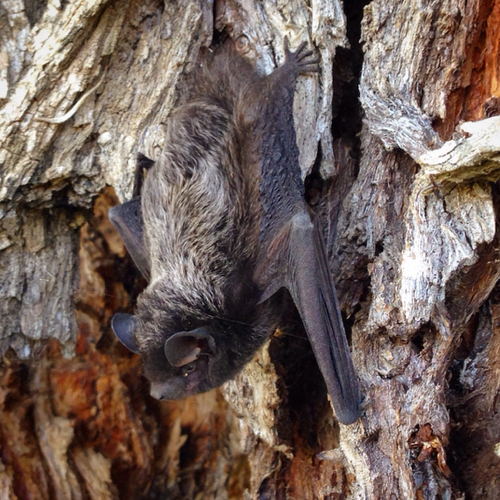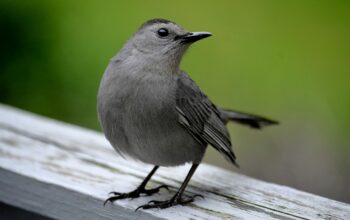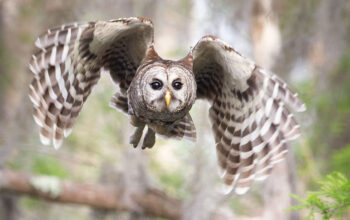by Chelsea Cochrane
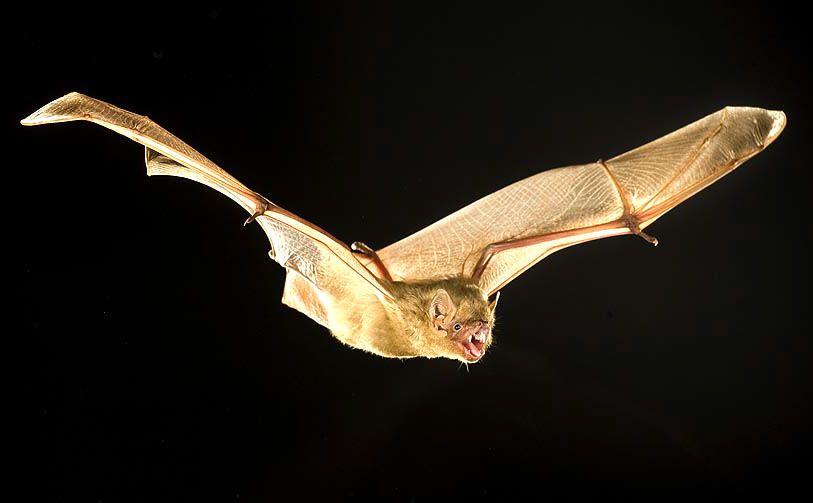
A common sight at dusk, bats are the only mammal capable of true flight. Their order, Chiroptera, is the second largest order of mammals after rodents, comprising about 20% of all classified mammal species worldwide. There are over 1,400 species of bats in the world – 45 are native to the United States, 11 can be spotted in Louisiana. These were originally divided into two suborders, the megabats and the microbats. Recently further knowledge of these unique mammals gave way to new classifications, dividing the order into the Yinpterochiroptera and Yangochiroptera suborders. The creation of these new subdivisions is largely based on molecular genetics data, unlike the old classifications which were more related to the bat’s eating or behavioral habits.
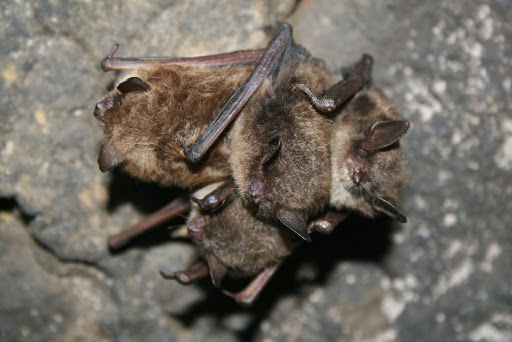
Despite what is presented in popular vampire culture most bats eat insects or fruit. In fact the largest bat species affectionately called “flying foxes” are harmless fruit bats (if you’re not a fruit farmer) including the impressive giant golden-crowned flying fox, Acerodon jubatus, which can have a wingspan of over 5 feet. We won’t see any of those here though – they prefer the tropics and subtropics of Asia. All bats found in the southeast United States are insectivorous, nocturnal, and locate food primarily by echolocation. Of over 1,400 species of bats, only three species feed solely on blood. These ‘vampire bats’ are found in Central and South America and rarely make their way into the US. Really.

Insectivorous bats are generally deemed a good thing, as long as they are not nesting in your attic. These heavy feeders eat many pest insects, like crop-eating beetles, moths, and mosquitoes, reducing the need for pesticides. Their waste, called guano, is mined and used as a popular fertilizer. Some species nest in huge colonies whose nightly flight can be a popular tourist attraction. Unfortunately some bats make great hosts for many pathogens like rabies, and it is advised to never interact with bats, and to take special precautions if an interaction occurs.
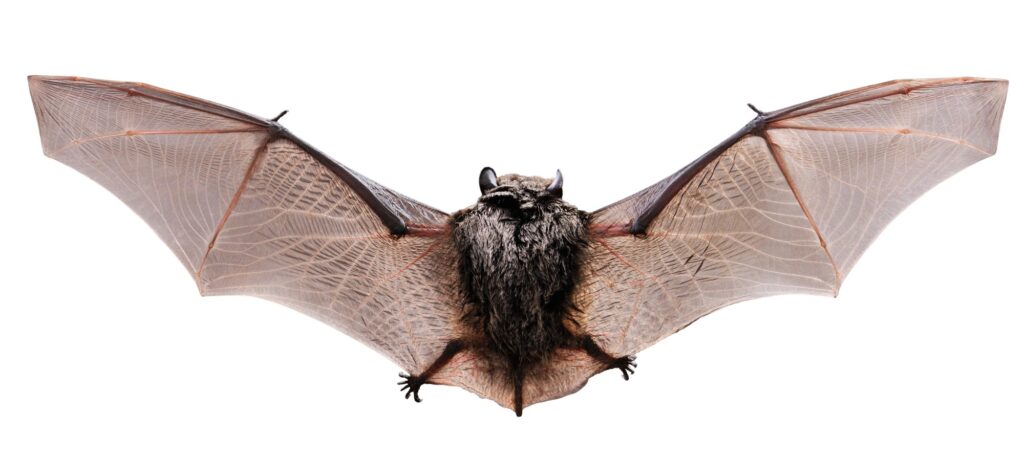
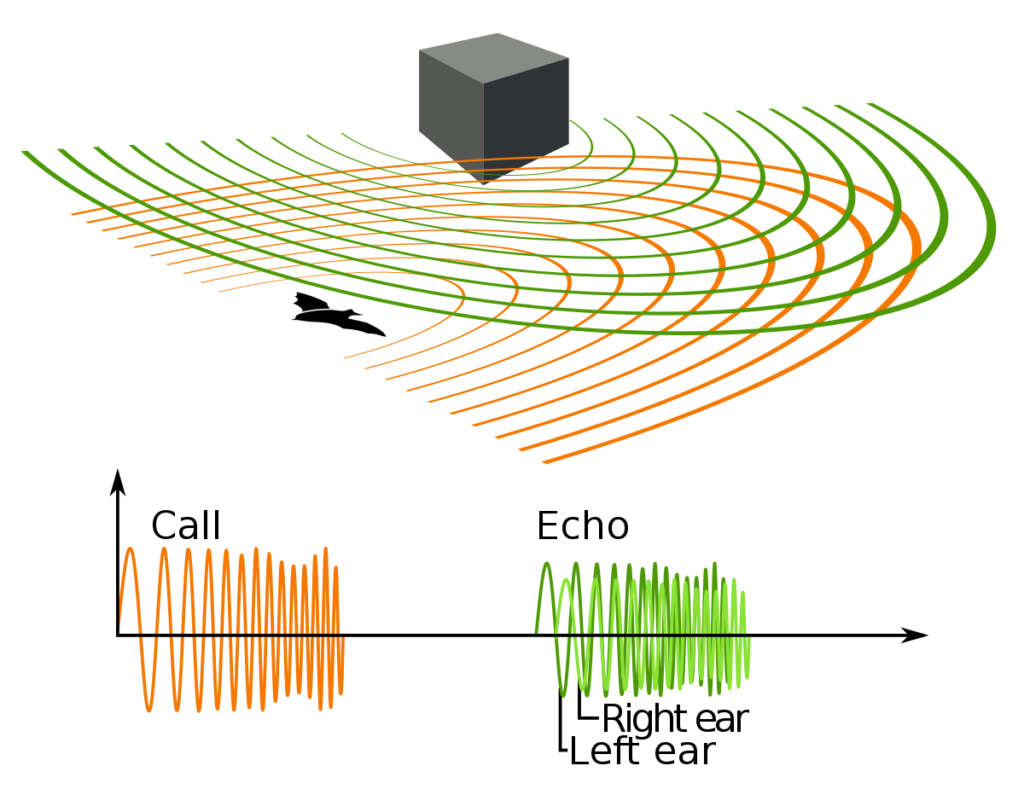
Bats have long been admired for their precise and maneuverable flight. Their wings have hand-like digits that connect to a pivotal “wrist”, covered with a tight thin membrane of skin called patagium. The order name Chiroptera means “hand-wing”. This gives them an advantage in agility over birds. Many also use echolocation – emitting an ultrasonic frequency to determine the exact location of an object by its reverberations. The bat’s highly developed ears can pick up the fluttering of a moth’s wings, and even the movement of underground insects!
Bats in Louisiana
There are 11 documented species of bats that can be found in Louisiana. Here is a list with short descriptions.
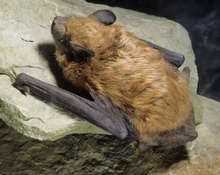
Big Brown Bat – Eptesicus fuscus
In the vesper bat family Vespertilionidae, the big brown bat occurs widely throughout the US, Canada, Central America and the Caribbean into South America. It’s large for a microbat, with a wingspan of up to 15 inches. Commonly seen just at dusk, the big brown bat can adapt to many environments, including urban settings.
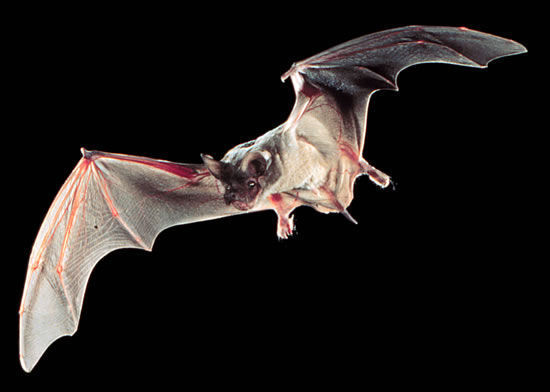
Mexican free-tailed bat – Tadarida brasiliensis
The Mexican free-tailed bat or Brazilian free-tailed bat of the family Molossidae is widely regarded as one of the most abundant mammals in North America. Nevertheless their natural habit of roosting in enormous numbers can cause massive fluctuations in populations due to habitat destruction and disease. The free-tailed bat holds the record for fastest documented flight speed of any animal, with a top ground speed of over 100 MPH.
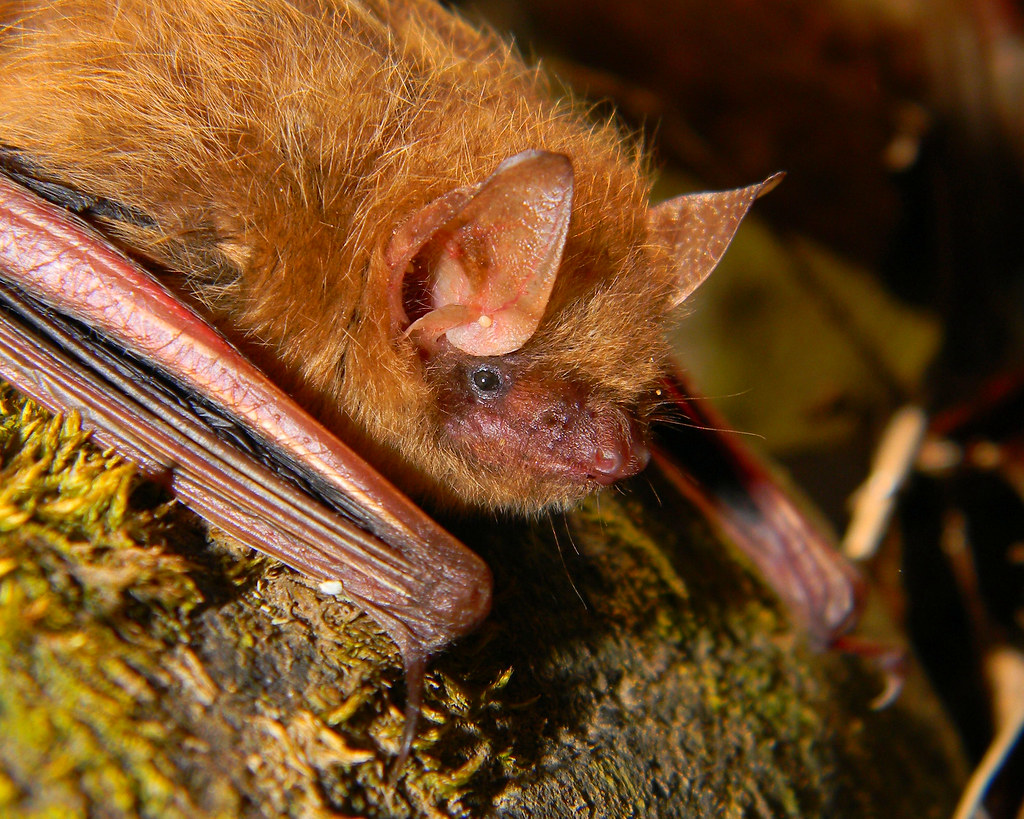
Tricolored bat – Perimyotis subflavus
The tricolored bat is a member of the vesper family native to eastern North America. It was formerly called an eastern pipistrelle based on its resemblance to the European Pipistrellus species, however further genetic studies revealed it is more closely related to the canyon bat and those of the vesper family. The name is derived from three distinctive bands of color on its back. Once common in this area, the tricolored bat has suffered significant decline since 2006 due to a fungal disease. The tricolored bat along with the silver-haired bat are the two bats most associated with carrying rabies.
Eastern red bat – Lasiurus borealis
Another member of the vesper family, the eastern red bat is considered among the most common in Louisiana, and is widespread throughout most of eastern North America. Its entire body is very furry, males are a rusty brick red, females have more gray dusting. Both have distinctive white patches on their shoulders.
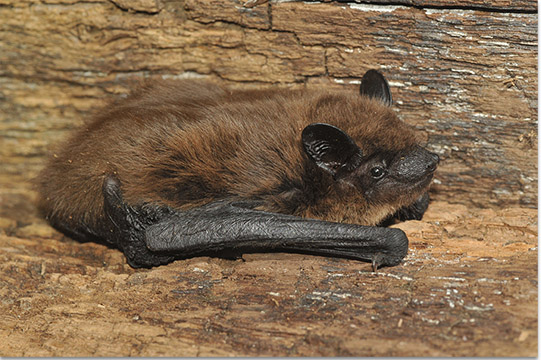
Evening bat – Nycticeius humeralis
Another quite common in our area, the evening bat is also in the vesper family, native to North America with a relatively small range over the southeast region. These small bats hunt strictly at night. They have short lifespans for bats but are heavy breeders – females will form “maternity colonies” consisting of 15 to 300 bats. 90 percent of births are twins, some singles and some triplets. They are known to be good pest-eaters.
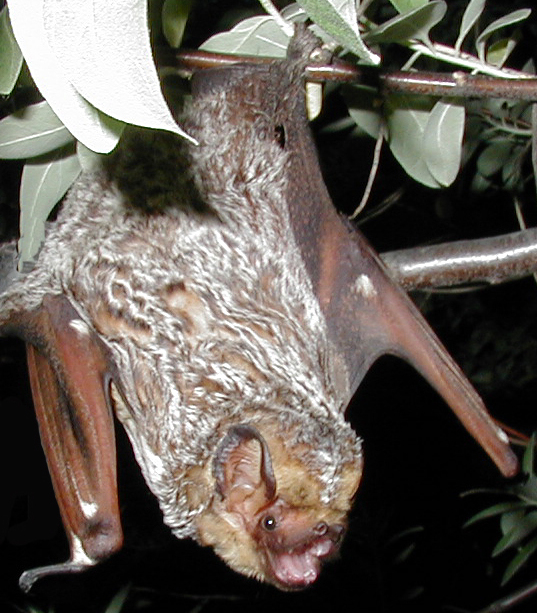
Hoary bat – Lasiurus cinereus
Also in the vesper family, the hoary bat can be found throughout most of North & South America, with some disjunct populations in the Galápagos Islands and Hawaii. It has a 15 inch wingspan and a thick coat of dark fur with white tips, giving it a gray-ish white frosted or ‘hoary’ appearance. The hoary bat is mainly solitary, though it will occasionally nest with other bats in a cave.
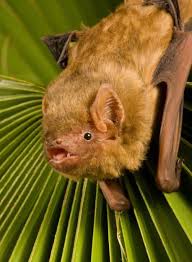
Northern Yellow Bat – Lasiurus intermedius
The northern yellow bat has a very specific region bordering the Gulf of Mexico through the US and into Central America. It tends to inhabit wooded areas near a permanent water source with Spanish moss or palm trees. This species of vesper bat uses Spanish moss exclusively for nesting. Its coat can vary from yellow-orange to gray-brown.
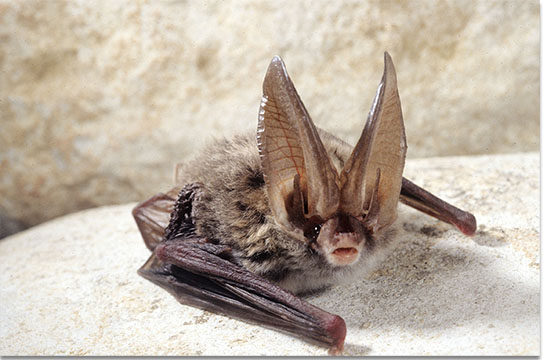
Rafinesque’s big-eared bat – Corynorhinus rafinesquii
Sometimes called the southeastern big-eared bat, this species has big ears. Over an inch long, which is quite big for a bat averaging 3 – 3.9 inches long. They are vesper bats in the genus Corynorhinus, meaning “club-nosed”. These are not the most attractive bats, and they are fairly uncommon throughout their range. Similar to the Townsend’s big-eared bat.
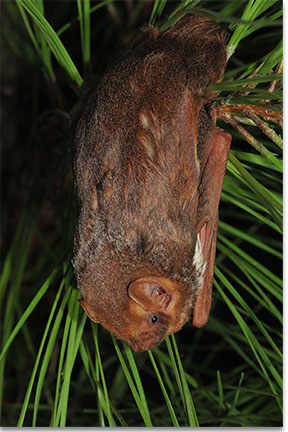
Seminole bat – Lasiurus seminolus
The seminole bat is another vesper with a relatively small distribution, found exclusively in the southeastern US. It is often confused for the red bat because of its similar coat. This bat feeds on a relatively large amount of ants, bees and wasps, as well as beetles, moths, flies and some cicadas. They also use Spanish moss for their nesting.
Silver-haired bat – Lasionycteris noctivagans
A solitary, migratory species of the vesper family, the silver-haired bat is the only member of its genus. Its range consists of much of North America, wintering in the south just into Mexico and summering all the way up to Alaska. We are actually on the very edge of its range here in St. Tammany. This bat has dense black fur with white tips, giving it the frosted appearance for which its named. The scientific name translates to “night-wandering”, an ode to these creatures’ nocturnal habits.
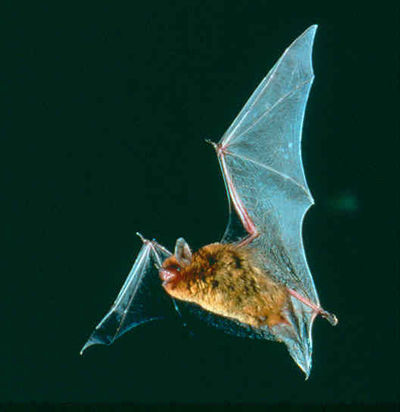
Southeastern myotis bat – Myotis austroriparius
Another bat with a very specific range, centered closely around the Gulf. These small bats vary from gray to bright orange-brown, weighing 5 – 8 grams. This species nests and hunts around open water and can be found in thick hardwood forests. It sometimes roosts with the Rafinesque’s big-eared bat. This myotis stands out among its genus as a heavy breeder, often producing twins. During nesting season the southeastern myotis is an important food source for barred owls.


